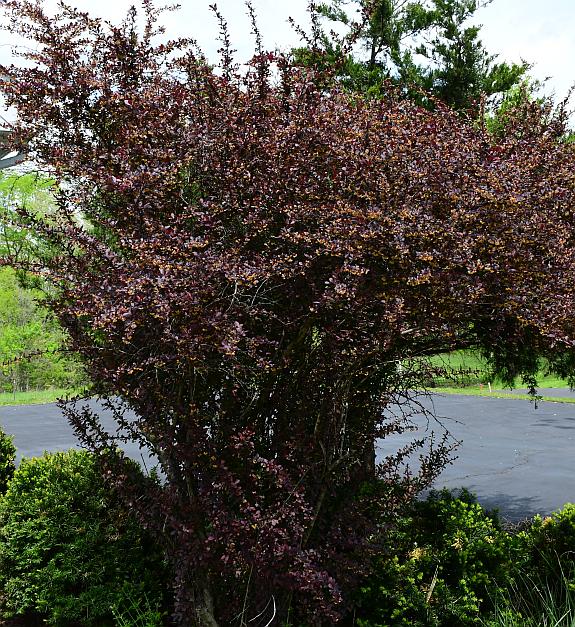Berberis thunbergii DC.
Japanese Barberry

Introduced
CC = *
CW = 3
MOC = 12
© SRTurner
Berberis thunbergii DC.Japanese Barberry | |
 |
Introduced CC = * CW = 3 MOC = 12 |
© SRTurner |
|
Family - Berberidaceae Habit - Shrubs 30-300 cm high. Stems - Second-year twigs with the bark purple or brown; spines simple or 3-branched.
Leaves - Alternate, numerous on plant, clustered on very short shoots in the axils of the spines, simple and unlobed, pinnately veined. Petioles absent or 1-8 mm long. Leaf blades obovate to spatulate, 1.2-2.4 cm long, 0.3-1.0 cm wide long-attenuate at the base, rounded or bluntly pointed at the tip, the margins entire.
Inflorescences - Axillary umbels 1.0-1.5 cm long, with 2-5 flowers, sometimes reduced to a solitary flower. Flowers with 3 small bractlets immediately below the calyx.
Flowers - Sepals 6, 3-5 mm long, petaloid, yellow. Petals 6, 2.5-3.0 mm long, yellow, bearing nectaries. Stamens 6, the anthers attached at the middle, opening by 2 apical flaps.
Fruits - Berries 9-10 mm long, red, ellipsoidal or spherical. Seeds 4-6 mm long, narrowly to broadly ovoid, the seed coat hard, tan or more commonly reddish brown to black.
Flowering - April - May. Habitat - Forests, disturbed areas. Widely cultivated, occasionally escaping. Origin - Native to Japan. Lookalikes - None close. Other info. - This shrub is not commonly found growing wild, though it is widely cultivated. It is easily recognized by the rosette-like clusters of leaves along the stems, which also bear unpleasant spines. The leaves are smoothly rounded at the tips and have no teeth along the margins. The deep red foliage of horticultural variants (shown above) is attractive, but the spines make the plant troublesome to maintain in landscaping. The numerous small yellow flowers are showy en masse but do not last long. Photographs taken near Labadie, Franklin County, MO, 4-24-2020 and 4-13-2021 (SRTurner). |